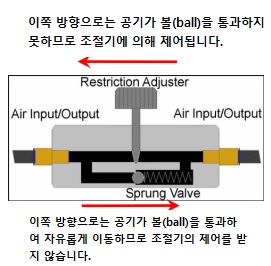[전기기초] 전자는 어떻게 에너지를 전달할까?
배터리에 저항을 연결하면 저항이 뜨거워집니다. 이 열은 회로 내 전자의 이동에 의해 발생되는 것으로 알고 있습니다. 그럼 이 열을 발생시키는 에너지는 어떻게 전달되는 걸까요?
이 내용에 대한 외국 포럼의 답변을 번역하여 공유하고자 합니다. 번역에 오역이 있을 수 있는 점 양해 바랍니다.
질문
So when electrons leave the negative side of the battery and the voltage get lost across the resistors in the circuit ..how do the electrons lose their energy ? How do the electrons carry that energy that produces the electricity then they LOSE it in the resistor ?
=> 배터리의 음극에서 전자가 떠나고, 회로 내 저항에서 전압강하가 발생합니다. 전자는 어떻게 에너지를 잃는 것이죠? 전자는 어떻게 저항으로 에너지를 전달하는 것인가요?
답변 1
The electrons do not "lose energy". The energy is transferred via the electric field, which can be viewed at the "pushing force". Crudely (an inaccurate analogy) the field pushes the electrons through a resistance and this causes friction through collisions with the atoms.
=> 전자가 에너지를 잃는 것은 아닙니다. 에너지는 전기장에 의해 전달(이동) 되고 "미는 힘"으로 볼 수 있습니다. (부정확한 비유를 사용하자면) 전기장은 전자를 저항으로 밀어 넣고 밀려진 전자는 저항 내 원자와 충돌로 인하여 마찰을 발생시키는 것입니다.
답변 2
Start by observing what happens to an electron released into a vacuum with an electric field across it, say produced by a 12V battery. It accelerates across the electric field, picking up kinetic energy.
=> 진공 공간에 12볼트 배터리를 이용하여 전기장을 생성했다고 가정해 봅니다. 그러면 전자는 전기장에 의해 가속이 되고 이는 운동에너지로 전환되는 것입니다.
The electric field provides a kind of potential energy, just like gravity does to a Fig Newton or an apple, providing the acceleration. This is why a voltage is called a potential difference, and the field is called a potential gradient. And the acceleration translates potential into kinetic energy. (...중략...) The stronger electric field across 1mm implies more acceleration but a shorter journey, (...중략...)
=> 전기장은 나무에서 바닥으로 떨어지는 사과를 가속 시키는 중력과 비슷한, 일종의 포텐셜 에너지를 제공합니다. 전기장에 의한 가속은 전자의 운동에너지로 변환됩니다. 전기장이 더 강력할 수록(전압이 높을수록 or 전위차가 클수록) 가속의 크기도 커집니다.
Now introduce a thousand obstacles - the atoms in a very small resistor. The electric field is the same, so the acceleration is the same, but after 1/1000 of the distance, the electron bumps into an obstacle, losing kinetic energy and momentum, and has to start accelerating again. That lost kinetic energy is transferred to the obstacle, vibrating it - heating the resistor.
=> 전자는 저항 안에서 수많은 원자들에 의해 흐름의 방해를 받습니다. 전기장의 세기에 따라 전자의 가속의 크기도 정해집니다. 전자는 저항 내 원자와 충돌하면서 운동에너지를 잃게 되고 다시 재가속 되기를 반복합니다. 이 과정에서 저항 내 원자로 전달된 운동에너지는 원자를 진동시키게 되고 저항이 열을 생성하게 됩니다.
답변 3
It is easiest to demonstrate the process with water flow analogy. Imagine that the battery is a water tower filled with water and water droplets represent electrons. Water pressure at the bottom represents voltage and water flow represents current. Ground represents positive terminal, the one where water (electrons ) will flow when allowed. In this system water it self does not have any energy, it is because it is held up high it can do some work when falling down.
=> 물을 이용한 비유를 들어 보겠습니다. 배터리는 높은 곳에 위치한 물탱크로 볼 수 있고 물이 아래로 떨어지는 것을 전자가 도체를 통해 흐르는 것으로 생각할 수 있습니다. 바닥에서 물의 압력을 전압으로 볼 수 있고 물의 흐름은 전류로 볼 수 있습니다. 바닥은 배터리의 양극입니다. 여기서 물 자체는 에너지를 가지고 있지 않습니다. 물이 높은 물탱크에 위치함으로써 위치에너지의 차이가 발생하고 위치에너지의 차이는 물을 가속시켜 운동에너지로 전환되고 바닥으로 떨어지게 합니다. 떨어지는 물이 무언가에 부딪히면 운동에너지를 부딪힌 물체에 전달함으로써 어떤 일을 하게 되는 것입니다.
Same with electrons: battery is just a chemical device that collects and stores some electrons at the negative terminal. If a load is connected between negative and positive terminal, electrons will start to flow through it and heat it in the process - do work. Same way water held up high can do work (and does in hydroelectric plants) when falling down. Energy is stored in the system, not water or electrons themselves.
=> 이것은 전자도 마찬가지 입니다. 배터리는 전자를 음극에 모아두는 화학적 장치입니다. 부하가 배터리에 의해 연결되면 전위차에 의해 전자가 가속되고 운동에너지를 가지게 되는 것입니다. 가속되는 전자는 회로 내 저항에 의해 운동에너지가 열로 전환이 됩니다. 에너지는 전기장에 내 있는 것이지 전자 자체에 있는 것이 아닙니다.
끝.
+flow+within+a+conductor.jpg)






댓글
댓글 쓰기